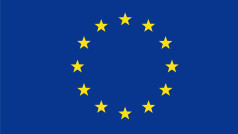This opportunity should not be missed or delayed considering the huge amount of waste that is still landfilled in EU28 even though the potential dangers of landfilling are well known: groundwater pollution due to possible leachate, the loss of land use, methane emissions that are significant contributors to Greenhouse gases and water pollution with microplastics blown by the wind into the sea or in rivers.
The waste diverted from landfills should be recycled to quality products. In order to ensure that recycled materials are clean and do not spread pollutants into the product chain (and eventually endanger the environment and human health) a treatment is necessary for the part that is not suitable for sustainable recycling. This treatment is Waste-to-Energy (incineration with energy recovery), acting as a ‘goalkeeper’ while using high temperatures to destroy bacteria, capture heavy metals and contaminations inherent in the waste.
Waste-to-Energy (WtE) is a reliable partner to treat the residual parts of the waste that are rejected by recycling facilities, e.g. because they are too polluted or the material is degraded after several times of recycling (cascading use of materials), CEWEP’s Managing Director Ella Stengler says.
In order to optimise the use of waste as a resource CEWEP asks to look at the whole picture. This means, not focussing on municipal waste only, which is just ca. 10% of the total waste generated in EU28, but also on the other 90%. This is necessary for evidence-based assumptions on the need for future treatment capacities in order to divert waste from landfills. WtE plants, for instance, treat 26% of municipal waste in EU28, but they also have to take non-recyclable commercial and industrial waste. The rate of incineration and co-incineration for the total amount of waste is 6%.
With regard to WtE plants, Ella Stengler suggests careful capacity planning, assuming ambitious recycling and waste reduction efforts. Currently, WtE capacity is unevenly spread in Europe. Whereas some Member States have used waste as a source of energy for a long time (heat is precious in cold countries), there are Member States which do not have any or just negligible capacity to use residual waste for energy generation. They still rely heavily on landfilling and also struggle to achieve high recycling rates. This should be changed, according to CEWEP, moving away from landfilling, higher up the hierarchy, towards a clean and sustainable circular economy.







